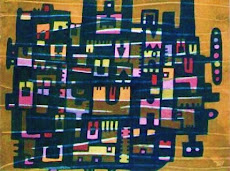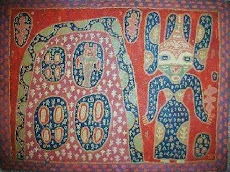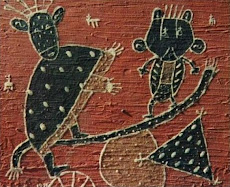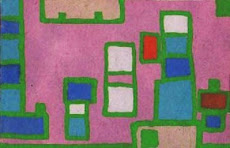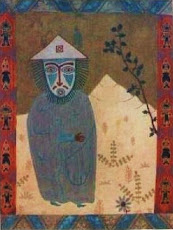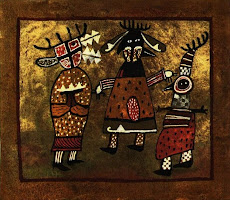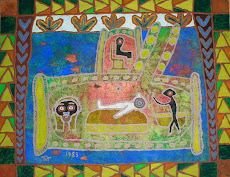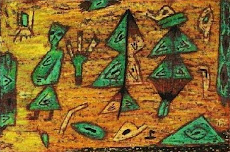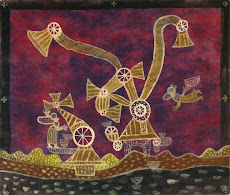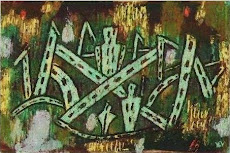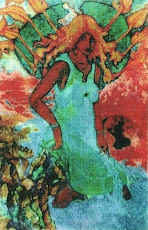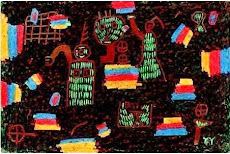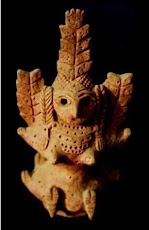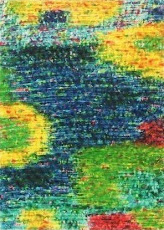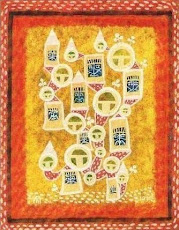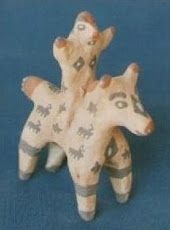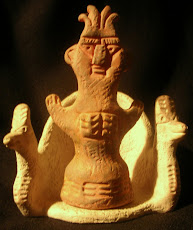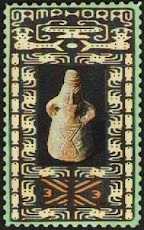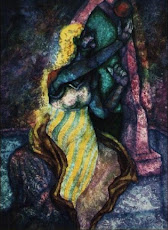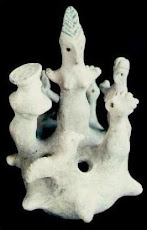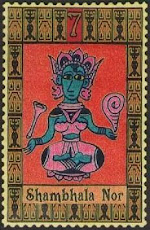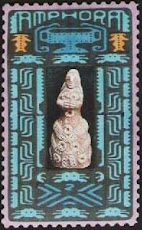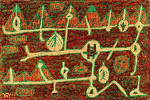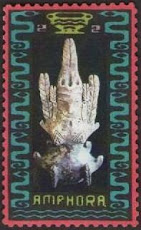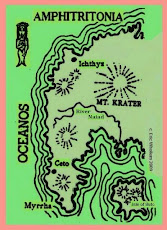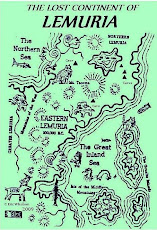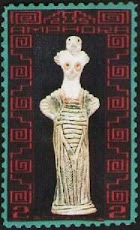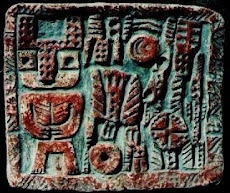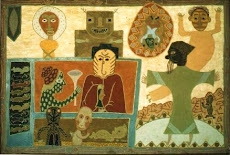The Rosy Matrix
1984
by Eric Whollem
gouache and wax resist on paper
Collection of the artist
3" x 4 1/4"
Copyright by the artist
Homeopathic and Sympathetic Alchemy
Artistically there are two main alchemical functions: homeopathic
and sympathetic. The homeopathic function includes those
transmutations involving the inclusion of natural materials such
as earth pigments, vegetable matter, or other substances imbued
with special significance. These materials may be added to paint
or applied to sculpture with the goal of raising consciousness: this
is the magnum opus, or Great Work, to take the artist to a higher
level of being.
The sympathetic function involves that art that imitates actions
or intentions. This could be exemplified in art that depicts in a
literary way prayers or perhaps political or social issues. Picasso's
'Guernica' is a good example of the sympathetic alchemical function
in art that has a political statement, while there are innumerable
spiritual icons from diverse cultures that exemplify the sympathetic
function: the evocation of the divine. The ancient alchemists were
people who aspired to enlightenment through the study of mysticism
and science.
My image, entitled 'The Rosy Matrix' is sympathetic insofar as it
depicts the nexus of the cross, a spiritual symbol found, of course,
in Christianity, but also in Chinese Taoism, where it is called 'rice'
and represents the breath, which could be interpreted as prana.
Many practitioners of yoga revere the cross form as it universally
appears in the vision of meditators as the gateway to the other
dimensions. The ancient alchemists of Europe always incorported
Christian symbolism into the Magnum Opus. However we do not
want to forget that it was the Arabs who first invented Alchemy.
Galen, was one of the first alchemists, famous for establishing the
four elememts: earth, air, fire and water as primordial.
Chinese alchemy always added 'metal' to the primordial elementary
statess of matter and spirit, while the alchemists of India added
'ether.'
It was Paracelsus, a Swiss alchemist from the time of the Renaissance,
who threw out Galen's earth, air, fire and water, and established his
own theory that the elemental states were much more diverse in
character than exemplified in the Galenic system. This eventually lead
to the discovery of the Table of the Elements that is now found in
modern chemistry.
_______________
See my posts on the subject of ALCHEMY on this link:
A POSTER STAMP FOR ART BLOG/ERIC WHOLLEM
King of the Wood
by Eric Whollem
earth paints on panel
COPYRIGHT BY THE ARTIST
My EARTH PAINTINGS, which are prime examples of homeopathic alchemy can be seen here:
Those interested in my GEOMETRIC ABSTRACTIONS should see:
Geometric Abstractions video.
My complete online posting of ABSTRACT PAINTINGS can be found here:
Read more about ALCHEMISTS on this link:
Abstract art, alchemy, metaphysical art, mixed media painting.

















